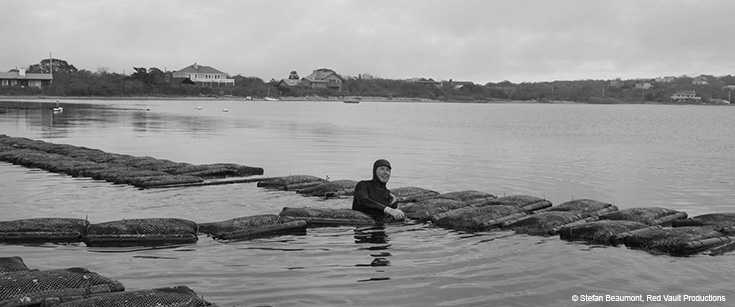Victory for New York Waters
Published by Ocean Conservancy
This piece was written by Mike Martinsen, Co-founder and Co-president of Montauk Shellfish Company Inc.
For forty years, I have worked as a bayman in New York’s rich waters. You could find me bullraking hard clams, sail dredging oysters, dredging bay scallops and potting lobster. I have earned a living from these waters my whole life. Declines—and the occasional full crash—in shellfish stocks, however, have forced me to look at other occupations.
Once upon a time, billions upon billions of bivalve shellfish carpeted the bottoms of New York’s bays, harbors, rivers and sounds. But, through unlimited fossil fuel consumption, poor septic planning and a lack of regulation on pesticide and fertilizer purchase and application, we have created a void in the water. The population of bivalve shellfish has declined precipitously.
There is good news on the horizon for me, my fellow baymen and all of you who love our seafood. Last week, New York enacted legislation forming a task force which will identify any sources of acidification in New York waters, and recommend how to address them. Using best available science to fix this problem is written into the law, and this first step to protect the local ocean is a milestone victory in my eyes. This is how smart, comprehensive restoration of our historic oyster reefs, eelgrass beds and coastal ecosystems starts.
Since the beginning of Montauk Shellfish Company Inc., a company I co-founded in 2009, which farms our exclusive Montauk Pearl Oysters, I found that shellfish aquaculture is very important. Bivalve shellfish in the New York estuaries are probably the most underappreciated living creatures. As filter feeders, they are responsible for maintaining balance with regard to water quality. The beauty of our operation is that each mature oyster will filter approximately 50 gallons of water per day. That means last year our farm filtered approximately 75,000,000 gallons of water each day! Also, the mature oysters had successful reproduction and the spat (tiny little babies) has landed at distant locales helping to promote the wild population growth.
As an aquaculturist, I can take pride in knowing that I am helping to rebuild the wild stock of shellfish in the marine environment. Without those filter feeders, water quality does not stand a chance. Nitrogen has become problematic and algal blooms have wreaked havoc on water quality.
There are things we can do to help mitigate the problems in our local waters. Awareness of how our consumption of fossil fuels and usage of household items can harm the estuary is key. Additionally, promoting shellfish aquaculture and protecting wild stocks will allow balance to be restored. A thriving shellfish stock allows the crucial roles of the natural filtration system, habitat source for juvenile fish and reef-like shoreline structure, to be enjoyed. All are paramount to the wellness of the estuary.
Monitoring water quality and creating legislation that reduces nitrogen input into the waters will be very important. However there is a very large monster out there that is just beginning to rear its ugly head. Ocean acidification has decimated juvenile shellfish in other places in the world. We know that larval shellfish are strongly affected by ocean acidification and that they cannot form the necessary shell to survive in an acidic environment. Many wonder if this could be as big a factor as nitrogen induced algal blooms in the system collapses we’ve seen.
It’s imperative that we begin to understand the impacts of our current fossil fuel emissions on the ocean. It’s imperative that we take responsibility for the damages that we have caused. And it’s imperative that we begin to act more responsibly toward life as a whole and especially the ocean—the mother of all life, the mother we all share. If the world is your oyster, why not work toward pristine water quality?
Read the full article at: http://blog.oceanconservancy.org/2016/12/08/victory-for-new-york-waters/



